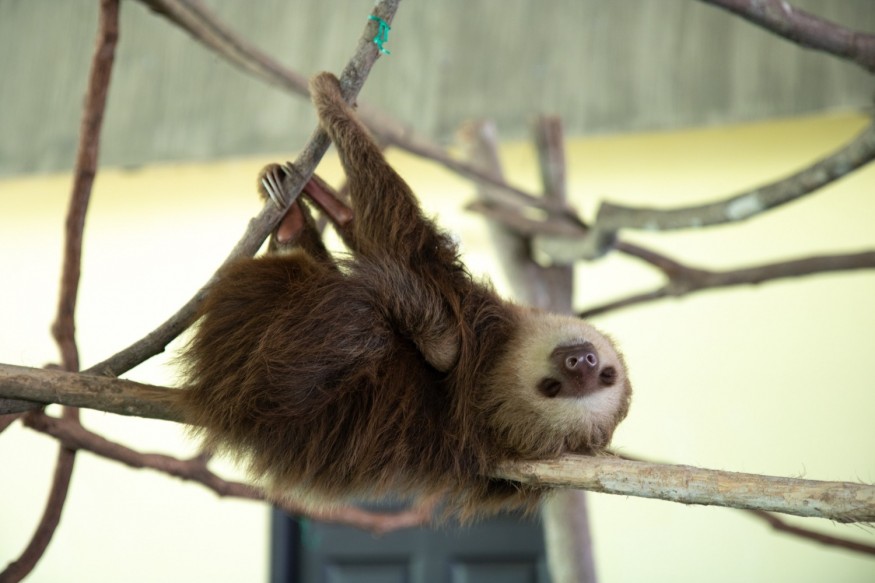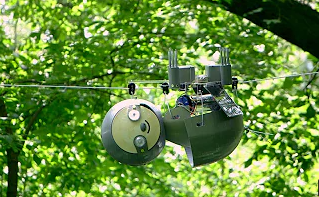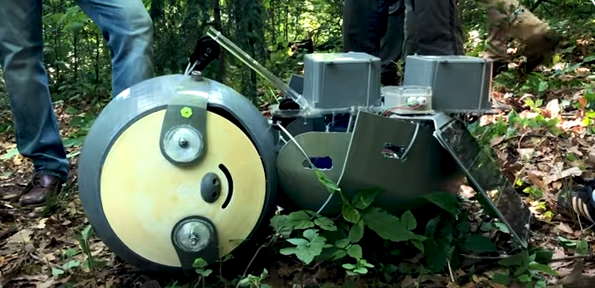
The sloth, suspended under a dense canopy of leaves, makes slow strides. Slowly, painfully long. Slowly but deliberately. The little creature, crawling high among the trees and traipsing over a 100-foot steel wire, resembles a sluggish acrobat. Its aim, however, is not to entertain or put on a show; in reality, it is the polar opposite. It's all about stealth, observation, and soaking in as much sunshine as possible for this sloth. This is, after all, a solar-powered robot.
SlothBot

SlothBot is under the direct supervision of the researchers who designed it at the Atlanta Botanical Garden. You will see the robot's googly eyes and 3D-printed shell as you walk along the garden's elevated Canopy Walk. The sloth does not seem to be gathering critical environmental data such as temperature and carbon dioxide levels, but it is.
Purpose
SlothBot performs the role of a private investigator. The robot's leisurely, languid locomotion lets it escape suspicion-and it'll need the invisibility if it wants to complete its task.
Blooming Mystery
A mystery is blooming deep in the Ecuadorian rainforest. A species of uncommon orchids is perplexing ecologists at the Siempre Verde research center, an 825-acre Andean nature preserve.
The Atlanta Botanical Garden's vice president for conservation and science, Emily Coffey, says, "We know where the orchids are, so we don't know what is pollinating them."
The botanical garden currently houses collections from about 90% of the world's Stanhopea orchids. Understanding their pollinator relationships may be the secret to maintaining these flowering plants. Stanhopea orchids, also known as euglossine-pollinated orchids, thrive at low elevations and coexist with their namesake pollinators, euglossine bees.
Coffey describes these bees as "the most beautiful bees you'll ever encounter." She's spent years studying these flying insects and is well-versed in their bright, metallic-looking wings, thoraxes, and abdomens. She isn't exaggerating when she says they are "living gems," as the US Forest Service puts it.
On the other hand, Euglossine bees are not known to exist in the Andes, where scientists have also discovered these orchids. "Do bees go up rivers to collect oils and then return down to live?" Coffey is a marvel. "Or do these orchids have a relationship with another insect?"
That's where SlothBot enters the picture.
SlothBot Detective

It's not easy to study rainforest wildlife. To gain access to such species, researchers must install large nets between trees, but these nets are costly, difficult to deploy and conflict with the local natural environment. Humans are also big, noisy, clumsy, and inconvenient. Meanwhile, a small robot might loiter for long periods of time undetected, gathering data that scientists would otherwise overlook.
"It's a detective story," says SlothBot founder Magnus Egerstedt. Egerstedt is the dean of Georgia Tech's School of Electrical and Computer Engineering, where he studies complex motion robots. "We don't know a thing about what happens in the rainforest under the tree canopy."
SlothBot was created by Egerstedt to assist ecologists like Coffey in the study of endangered plant and animal species, starting with euglossine-pollinated orchids.
Robo-Spy Espionage
To gather environmental data, the robot can use a variety of sensors. This could help ecologists compare the data to what they already know about high-altitude insects, or it could reveal new details about which tiny flyers are pollinating the flowers high in the mountains. There's also the possibility that SlothBot's onboard camera could catch certain insects in the act.
For more environmental news, don't forget to follow Nature World News!
© 2025 NatureWorldNews.com All rights reserved. Do not reproduce without permission.





